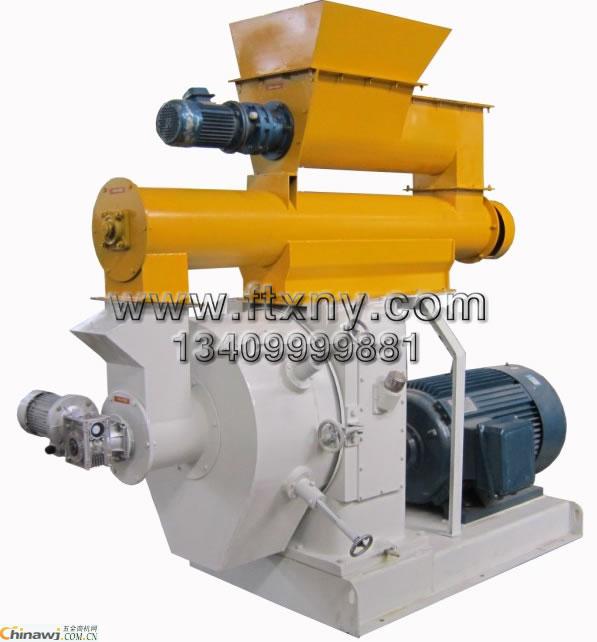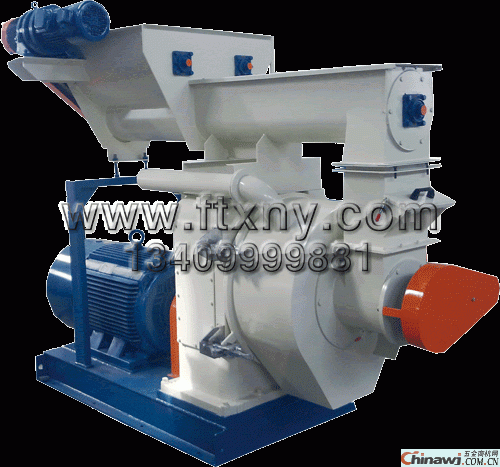

With the rapid advancement of technology, our quality of life has significantly improved. However, this progress has also brought about growing concerns regarding energy consumption and safety. As national energy resources may become limited in the near future, it is crucial that we turn to renewable energy sources. These sustainable options can be converted into fuel, helping reduce energy waste and promoting more efficient usage. Taking these steps not only supports our survival but also enhances our living standards.
 Product Introduction
Our company specializes in feed crushing machines, feed mixers, and horizontal feed mixing machines. Among our most popular products are the SKJ flat die pellet machines, available in models such as 105, 120, 150, 200, 250, 300, 350, 400, 450, and 550. These machines are designed with advanced technology, incorporating high-quality wear-resistant materials for the "template" and "pressure roller," ensuring a long service life. The transmission system uses a car differential and universal joint drive, offering low noise, low power consumption, and high efficiency. This is the first patented product developed by our company, ideal for small to medium-sized farms, feed mills, organic fertilizer production, and chemical industries. It requires minimal investment, delivers quick results, and carries no significant risks—making it the best choice for particle processing.
  Advantages of Our Pellet Machines
The SKJ series pellet machine is manufactured using special techniques. Its surface is smooth, and its hardness is well-balanced, allowing for adjustable particle size. The internal ripening process helps gelatinize starch, coagulate proteins, and improve the nutritional value of feed, making it easier to digest. Additionally, this process can kill common pathogens and parasites. By adjusting the compression ratio of the mold, you can produce low-temperature pellets such as feed, organic fertilizer, compound fertilizer, and biological bacterial fertilizer. The moisture content of the granulated material is around 13%, so no cooling is required; it can be naturally cooled.
  Working Principle of Pellet Machines
(Taking the SKJ-150 feed pellet machine as an example)
The machine consists of a motor, drive shaft, flat die, pressure roller, feeding hopper, cutter, and discharge hopper. It operates through mechanical circular motion. A Diesel Engine or electric motor drives the drive shaft, which then transfers power to the main shaft and the template. The pressure roller rotates against the template, pressing the material through the holes in the die. The cutter then segments the extruded material, forming the final pellets that are discharged from the feed opening.
  Usage and Maintenance Tips
Before using the machine, check if all screws are tightened properly. Before starting, loosen the two adjustment screws on the pressure roller, start the motor, and ensure the rotation direction matches the markings. Mix 5 kg of bran, 25 kg of fine sand, and 5 kg of oil evenly (for models like 105 and 120). Tighten the pressure roller adjustment screws (the gap between the roller and the die should be 0.1–0.3 mm), then run the machine and grind the material several times until the die holes are smooth and all material is discharged. After stopping the machine, use steel nails to clear any remaining material in the die holes.
When using the machine, stop feeding before turning it off. After processing the material, add oil-containing material into the die hole to keep it lubricated, preventing blockage in the next use. Adjust the position of the cutter above the discharge port to control the length of the pellets. The grass powder content in raw materials should not exceed 50%. Clean the pressure roller bearings with gasoline or diesel every five days, and inject high-speed lubricating oil at the same time. Inspect the gear box every six months, and clean the vertical shaft bearing every seven days.
When replacing the die, remove the reverse nut first. There are two 8mm holes on both sides of the die. Use a screw rod to slowly eject the die. If resistance is felt, gently tap the die with a hammer to avoid breaking the screw into the hole. If the machine fails during operation, refer to the “Fault and Removal Method†in the manual.
  Safety and Care Tips
Operators should be familiar with the user manual, understand the machine’s performance, structure, and operating procedures, and follow installation, debugging, and maintenance guidelines. Remove hard materials from the feed to prevent damage to the machine. Never reach into the transmission area or granulation chamber when the machine is running. Regularly check the wear of the flat die and pressure roller. Always cut off the power supply before servicing or adjusting the machine to ensure safety. Ground the motor to prevent accidents.
  Troubleshooting Guide
Symptom | Fault Cause | Remedy
Low output or no granulation 1. Poor finish on the first use of the flat die 1. Lubricate with oil-containing material. Output will increase after some operation.
2. Moisture content too high or low 2. Adjust water content of the material.
3. Large gap between pressure roller and die 3. Adjust the compression bolt.
4. Severe wear on pressure roller or die 4. Replace worn parts.
5. Slipping or aging V-belt 5. Tension or replace the V-belt.
Excessive powder in the finished product 1. Low moisture content 1. Increase water content.
2. Excessive wear on the flat die 2. Replace the die.
3. Rough surface of particles 1. High moisture content 1. Reduce moisture content.
2. First use of the flat die 2. Re-grind with oily materials.
4. Unusual noise 1. Foreign object in the machine 1. Stop and remove foreign objects.
2. Damaged bearings 2. Replace damaged bearings.
3. Loose parts 3. Tighten loose components.
5. Sudden stoppage 1. Overload or blown fuse 1. Increase clearance between roller and die, replace fuse.
2. Foreign object inside 2. Remove foreign object.
3. Low voltage or insufficient motor power 3. Replace power cable or motor.
  Excellent Products Need Excellent Support
Our company offers comprehensive after-sales service to ensure your satisfaction. Whether it's installation, operation, or troubleshooting, our team is always ready to assist. With reliable support and high-quality products, we are committed to providing the best solutions for your pellet production needs.

Cutting machine/Floor saw is a device that uses a high-speed rotating cutting blade to cut concrete/asphalt pavement. The cutting blade is the core component of the cutting machine, which is usually made of diamond, which has high hardness and wear resistance, and can complete the cutting task quickly and accurately.
Concrete and Asphalt Saw Cutter,Concrete Cutter 20 Hp,Concrete Cutter Machine,road cutter
Vibropac Machinery Co.,Ltd , https://www.vibropac-power.com